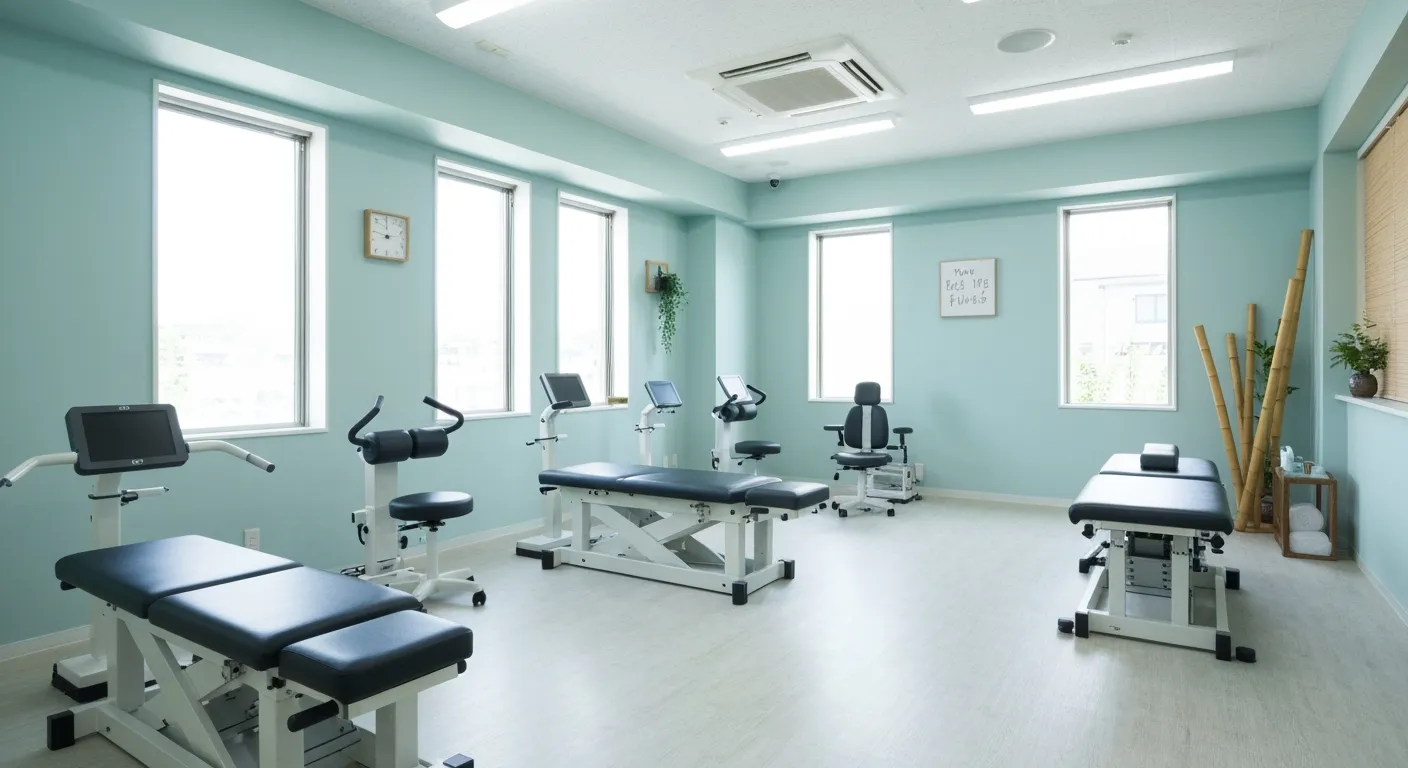How Addressing Underlying Causes Improves Pain Treatment Effectiveness
October 8, 2025
13 min

Understanding Pain Beyond the Surface
Pain is more than just a symptom; it is a complex, multifaceted experience governed by biological, psychological, and social factors. Effective pain treatment hinges on identifying and addressing its underlying causes rather than merely alleviating symptoms. This article explores how root cause analysis and a comprehensive, individualized approach transform pain management outcomes, offering hope for sustained relief and improved quality of life.
The Relationship Between Underlying Causes and Effective Pain Treatment
What is the relationship between underlying causes and effective pain treatment?
The connection between root causes of pain and effective treatment is vital for meaningful relief. Pain is often a symptom of a deeper issue, such as tissue damage, nerve injury, inflammation, or psychological stressors. Accurate diagnosis of these underlying factors allows healthcare providers to tailor treatments specifically to the cause, rather than merely alleviating symptoms temporarily.
Addressing root causes involves a comprehensive assessment, including medical history, physical exams, imaging tests, and laboratory analysis. When the underlying issue is identified, treatment strategies—ranging from medications and physical therapy to lifestyle changes and interventional procedures—can be precisely targeted.
This approach not only improves the likelihood of long-term pain relief but also prevents the condition from worsening or becoming chronic. For example, managing inflammation in arthritis or nerve damage in neuropathic pain can significantly reduce symptoms and improve function.
Ultimately, understanding and treating the root cause fosters a more sustainable recovery, supports mental and emotional health, and reduces dependence on medications that only mask pain temporarily.
Identifying and Diagnosing the Root Causes of Pain: A Multidisciplinary Approach

How can healthcare professionals identify and diagnose the root causes of pain?
Healthcare providers use a comprehensive, multidisciplinary approach to pinpoint the underlying causes of pain effectively. This process begins with a thorough patient history, where clinicians ask about the onset, duration, location, and characteristics of the pain, as well as any factors that exacerbate or relieve it.
A detailed physical examination follows, assessing signs such as tenderness, swelling, range of motion, and neurological function. This clinical assessment helps classify pain into different types—acute, chronic, neuropathic, or nociceptive—which informs the diagnostic pathway.
To delve deeper into the root cause, various diagnostic tools are employed. Imaging techniques like X-rays, MRI, and CT scans reveal structural abnormalities, inflammation, or damage in tissues, bones, or nerves. Blood tests can identify markers of inflammation, infection, or metabolic conditions contributing to pain. Nerve studies, such as nerve conduction velocity tests and electromyography (EMG), evaluate nerve function and detect nerve injuries or neuropathies.
In complex or stubborn cases, advanced diagnostics like quantitative sensory testing, brain imaging, and fiber fiber analysis assist in understanding the neural mechanisms involved. These techniques can differentiate between different pain types and identify central sensitization or alterations in pain processing pathways.
Classifying pain accurately is critical because it guides targeted treatment strategies. For example, neuropathic pain may require anticonvulsants or antidepressants, while nociceptive pain related to tissue injury could respond better to anti-inflammatory medications.
Beyond physical assessments, psychosocial evaluation is essential in adopting the biopsychosocial model of pain management. Mental health screening and assessment of social factors help recognize the influence of emotional and environmental components that can sustain or amplify pain.
Furthermore, ongoing evaluation, adaptive diagnostics, and clinician judgment are crucial, particularly in chronic pain conditions where the underlying mechanisms may evolve over time. Integration of clinical findings with mechanistic insights allows healthcare professionals to develop personalized, effective treatment plans that target the specific source of pain.
By combining these methods, clinicians can achieve a more precise diagnosis, which is the foundation for effective and sustainable pain management.
More information on diagnostic strategies for pain
Search query: multidisciplinary diagnostic strategies for pain
This approach underscores the importance of a holistic and individualized process, integrating physical, neurological, and psychological assessments to comprehensively understand and treat pain. For further reading on determining the root cause of pain and diagnostic approaches and the importance of identifying the root cause for long-term relief.
Impact of Underlying Causes on Pain Management Strategies
How do underlying causes impact pain management strategies?
Understanding the root causes of pain is essential for developing effective treatment plans. Different underlying conditions—such as nerve damage, inflammation, or tissue injury—necessitate tailored approaches that specifically target those mechanisms (Determining the Root Cause of Pain).
For example, neuropathic pain resulting from nerve injury often responds best to anticonvulsants or antidepressants like gabapentin, while nociceptive pain caused by tissue inflammation might be treated effectively with NSAIDs or corticosteroids (Pharmacologic Therapy for Acute Pain).
Recognizing co-occurring psychological and social factors, including depression, anxiety, or stress, influences the overall treatment strategy. Addressing these factors through psychological therapies like cognitive-behavioral therapy can reduce the perception of pain and improve treatment outcomes (Interventions for Chronic Pain and Mental Illness).
Recent advancements include the use of molecular and neural circuit research to personalize therapies further. Identifying specific pathways involved in chronic pain—such as inflammatory or neuroplastic mechanisms—allows for mechanism-based interventions that directly modulate abnormal neural activity (Pathophysiologic approach to pain therapy).
Consequently, isolating and treating the precise etiology not only alleviates pain more effectively but also enhances overall patient function and reduces the risk of persistent or recurrent pain. It fosters a comprehensive, multidisciplinary approach that incorporates pharmacological, behavioral, and technological innovations (Pain Management Best Practices Task Force).
Search query: how pain etiology guides management strategies
This approach underscores the importance of accurate diagnosis and mechanistic understanding in customizing pain management, ultimately leading to better patient outcomes and quality of life (The Importance of Identifying the Root Cause of Pain).
The Role of Underlying Mechanisms and Etiologies in Therapy Choices

How do underlying mechanisms and etiologies affect therapy choices in pain management?
Understanding the root causes and mechanisms behind pain is essential for choosing effective treatment strategies. Different types of pain, such as neuropathic, inflammatory, or centralized pain, originate from distinct biological processes, which determine the most suitable therapies.
For example, neuropathic pain, caused by nerve damage or abnormal nerve activity, often responds better to medications targeting nerve signaling. These include antidepressants like tricyclic antidepressants (TCAs) or serotonin-norepinephrine reuptake inhibitors (SNRIs), and anticonvulsants such as gabapentin or pregabalin. These drugs modulate neural pathways involved in nerve hypersensitivity and neural plasticity (Pharmacological Methods of Pain Management, Pathophysiologic approach to pain therapy).
In contrast, inflammatory and tissue-based pains, such as arthritis or injury-related pain, are primarily driven by inflammatory mediators like prostaglandins. Nonsteroidal anti-inflammatory drugs (NSAIDs) are commonly effective in these cases, inhibiting cyclooxygenase (COX) enzymes to reduce inflammation and associated pain (Chronic pain management).
The assessment of whether pain is primarily driven by peripheral tissue injury, nerve injury, or central sensitization (where nerves become hypersensitive or the brain amplifies pain signals) guides the selection of treatments (Understanding the complexity of pain). Addressing inflammation with medications and physical therapies can prevent further tissue damage, while managing nerve hypersensitivity may involve specific pharmacological and psychological interventions.
Moreover, treatments targeting central nervous system plasticity, such as neuro-modulation techniques or cognitive-behavioral therapy, are increasingly recognized as important in managing chronic pain involving neuroplastic changes (Neuromodulation and Non-pharmacological Interventions, Cognitive Behavioral Therapy (CBT) for Pain). Recognizing neuroplasticity and central sensitization underscores the need for multimodal treatment approaches that include psychological therapies, physical activities, and medications (Multimodal approaches for chronic pain).
In sum, understanding the underlying mechanisms—whether nerve damage, inflammation, or central processing alterations—enables clinicians to tailor interventions that are more likely to be effective, prevent chronicity, and improve long-term outcomes (The Importance of Identifying the Root Cause of Pain).
Comprehensive Evaluation to Enhance Pain Relief

A comprehensive evaluation of pain causes is fundamental for effective pain management because it enables healthcare providers to accurately determine the origin, nature, and contributing factors of a patient's discomfort. This detailed assessment lays the groundwork for personalized and targeted treatment strategies that are more likely to succeed (Determining the root cause of pain, Root Cause Analysis in Pain Management).
Structured pain assessment tools such as the WILDA approach (which considers Word descriptors, Intensity, Location, Duration, and aggravating/alleviating factors), Visual Analog Scales (VAS), and various questionnaires help document pain characteristics systematically (Pain intensity measurement, Pain assessment methods). These tools facilitate consistent monitoring over time, providing a clear picture of how pain fluctuates, responds to treatment, and impacts daily functioning (Functional outcomes in pain treatment).
Understanding the underlying causes—whether it’s arthritis, neuropathy, inflammation, or autoimmune issues—guides clinicians in selecting the most appropriate therapies. For example, nerve pain may require anticonvulsants or nerve blocks, while inflammatory pain might be managed with NSAIDs or corticosteroids (Medical Techniques for Diagnosing Pain, Pharmacologic Therapy for Acute Pain).
Ongoing reassessment allows clinicians to track treatment effectiveness and make necessary adjustments. Regularly revisiting the patient's symptoms, functional status, and quality-of-life measures ensures that therapies remain aligned with evolving needs, minimizing unnecessary medications and interventions (Clinically important changes in pain and functioning, Comprehensive pain assessment).
The integration of physical, psychological, and lifestyle evaluations into the assessment process ensures a holistic approach. It considers mental health, social factors, and behavioral aspects that influence pain perception and treatment adherence (Biological, psychological, and social factors of pain, Psychological therapies for pain).
In summary, comprehensive evaluation methods that combine structured tools, ongoing reassessment, and an integrated approach to physical and psychological factors significantly enhance pain relief. They enable personalized care, improve functional outcomes, and contribute to the overall well-being of the patient (Personalized pain management approaches, Effective pain management, Holistic pain treatment approach).
Scientific Research and Evidence-Based Approaches in Pain Management
What scientific research and evidence-based approaches exist for pain management?
Current scientific efforts in pain management prioritize a multidisciplinary and personalized approach, integrating multiple therapies tailored to individual patient's needs. Evidence from rigorous research, particularly systematic reviews and meta-analyses from the Cochrane Collaboration, supports the use of nonsteroidal anti-inflammatory drugs (NSAIDs) for tissue and inflammatory pain, demonstrating their efficacy in reducing pain and inflammation.
However, data also highlight limitations and risks associated with long-term opioid therapy, including dependence and limited additional benefit over other treatments. Consequently, treatment guidelines emphasize minimizing opioid use in favor of alternative modalities.
Non-pharmacologic therapies such as cognitive-behavioral therapy (CBT), mindfulness-based approaches, yoga, tai chi, and physical therapies have proven effective in numerous chronic pain conditions. These behavioral and mind-body techniques tend to produce fewer adverse effects and can assist in managing the emotional and psychological aspects of pain.
Advanced and emerging modalities are gaining attention, including neuromodulation techniques like spinal cord stimulation and transcranial magnetic stimulation (TMS), which influence neural pathways to reduce pain signals.
Pharmacological innovations such as ketamine, which acts on glutamate receptors, are being investigated for treatment-resistant cases of chronic pain. Novel drugs targeting specific neural or inflammatory pathways are also at the forefront of research.
The overarching consensus from scientific evidence underscores the necessity of a multimodal approach, combining medications, physical therapies, psychological support, and innovative interventions. This strategy improves treatment success and reduces risks, aligning with current best practices recommended by global guidelines.
Early Intervention: Preventing Chronic Pain Development
What is the role of early intervention in preventing chronic pain?
Early intervention is vital in breaking the cycle of pain becoming a long-lasting condition. When acute pain is addressed promptly, it helps prevent the biological processes—such as inflammation and nerve sensitization—that can lead to chronic pain. This proactive approach involves thorough assessment, timely treatment, and lifestyle modifications, all aimed at reducing the risk of pain persistence. Learn more about the importance of early pain treatment.
In practice, early intervention might include physical therapy to restore joint and muscle function, appropriate medication to control inflammation and nerve activity, and psychological support to manage stress and emotional responses. Implementing these treatments within the first 90 days after injury or onset is especially crucial, as it significantly reduces the chances of developing long-term disability. See details on acute pain management and preventing chronic pain.
Research indicates that prompt and targeted care can lead to better healing outcomes, decreased dependence on medications, and preserved mobility. It also lowers the likelihood of secondary issues like depression and anxiety, which often accompany chronic pain. For more on improving quality of life through early pain management, visit guidance on managing chronic pain.
Timely management benefits both adults and children, with psychological therapies, such as cognitive-behavioral therapy, proving effective in mitigating long-term pain severity. This integrated approach not only enhances physical recovery but also supports mental health, ultimately leading to improved overall well-being. Explore more about psychological therapies for pain.
Role of physical therapy and medication
Physical therapy plays a foundational role in early intervention by helping restore movement, reduce stiffness, and improve strength, which are crucial to preventing the chronification of pain. Learn about physical and occupational therapy for pain.
Medications, when used appropriately, can decrease inflammation, alleviate nerve sensitivity, and control pain symptoms, setting the stage for better recovery. For more about medications in pain management, see this resource.
Psychological interventions to mitigate long-term impact
Psychological therapies like cognitive-behavioral therapy help patients develop coping strategies, reduce catastrophic thinking, and modify emotional responses that can amplify pain. Read more on cognitive-behavioral therapy for chronic pain.
Addressing mental health early can prevent the development of persistent pain syndromes and related disorders. Find information on interventions for chronic pain and mental illness.
Benefits on mental health and functional recovery
By intervening early, patients experience not only decreased pain severity but also better mental health outcomes. They maintain higher levels of activity, return to daily routines faster, and have a lower risk of developing depression or anxiety linked to long-term pain. More on this can be found in managing chronic pain and mental health.
Overall, early intervention fosters a holistic recovery, emphasizing the importance of integrated care across physical and psychological domains to improve the quality of life and reduce societal costs associated with chronic pain. For comprehensive insights, consider multidisciplinary pain treatment approaches.
Multidisciplinary and Holistic Pain Management Approaches

How do multidisciplinary and holistic approaches contribute to pain management?
Multidisciplinary and holistic strategies in pain management involve collaboration among diverse healthcare professionals, including physicians, psychologists, physical and occupational therapists, social workers, and specialists in complementary medicine. This teamwork allows for comprehensive assessment of the complex, multifactorial nature of chronic pain, which includes physical, psychological, social, and lifestyle influences (Multidisciplinary approaches for chronic pain).
These approaches integrate various treatment modalities like medication management, physical therapies, psychological support, and alternative therapies such as acupuncture or mindfulness practices (Complementary therapies for pain, Mindfulness and Meditation Techniques). By tailoring interventions to individual needs, they promote better engagement and adherence to treatment plans (Personalized pain management approaches).
A coordinated, team-based approach enhances communication among providers and patients, ensuring consistent messaging and comprehensive care (Multidisciplinary Pain Management Team). This leads to improved functionality, greater patient satisfaction, and often a reduction in the use of opioids and other medications (Effective pain management, Opioid therapy limitations).
Research consistently shows that multidisciplinary programs outperform single-discipline treatments in managing chronic pain, offering cost-effective solutions that improve long-term health outcomes (Chronic Pain Management). Ultimately, these strategies foster a holistic, patient-centered care environment that addresses all dimensions of pain, improving quality of life and supporting sustained recovery (Holistic management of chronic pain).
Psychological and Biological Factors: Their Influence on Pain Perception and Treatment

How do psychological and biological factors influence pain perception and treatment?
Pain is a complex experience shaped by a dynamic interplay of biological, psychological, and social elements, encompassed within the biopsychosocial model. Biology forms the foundation of pain through mechanisms such as nerve damage, tissue inflammation, and genetic predispositions, which determine physical sensitivity and tissue vulnerability. For example, genetic variations can influence the functioning of ion channels like Nav1.7, affecting how pain signals are generated and perceived (Genetics and pain).
However, psychological factors significantly modify this biological backdrop. Anxiety, depression, and catastrophizing—thinking excessively about pain and expecting the worst—can heighten pain perception and make the experience more distressing (Psychological factors influencing pain). Stress hormones like cortisol can also influence neural pathways involved in pain processing, often intensifying chronic pain conditions (Sympathetic Activation and Pain).
Social aspects, including support systems and cultural beliefs, further impact how pain is experienced and managed. For instance, social support can buffer against pain’s emotional impact, whereas stigma or negative beliefs about pain can exacerbate suffering (Social determinants and disparities in pain care).
These intertwined factors mean that individual differences in pain sensitivity and treatment responses often depend on a person’s unique genetic makeup, psychological state, and social environment. Women and older adults, for instance, may perceive pain differently due to hormonal and neurobiological differences, which also affect how they respond to therapies (Pain management in older adults).
Understanding this complex interaction enables healthcare providers to tailor interventions that address both biological abnormalities—such as nerve dysfunction—and psychological aspects like coping strategies. Approaches such as cognitive-behavioral therapy, pharmacogenomics, and multidisciplinary pain management consider these factors holistically, leading to better patient outcomes (Cognitive-behavioral therapy for pain).
In essence, acknowledging and integrating psychological and biological influences into pain treatment promotes a personalized approach, improving effectiveness and patient satisfaction. This comprehensive perspective encourages ongoing research and technological advancements, such as neuroimaging and genetic testing, to further refine individualized pain management strategies (Advances in personalized pain medicine).
More Information
Search query: psychobiological influences on pain management
| Aspect | Biological Factors | Psychological Factors | Impact on Treatment |
|---|---|---|---|
| Genetics | Variations in genes like Nav1.7 affect pain sensitivity | Not directly influenced but modulate individual baseline | Pharmacogenomics can personalize medication choices |
| Neurobiology | Neural pathways, brain regions, neurotransmitters | Stress, mood, perception, catastrophizing | Affects response to therapies like CBT and neurostimulation |
| Hormones | Cortisol, sex hormones influence pain responses | Emotional states and mental health | Hormonal regulation may improve pain control |
| Tissue Damage | Inflammation, nerve injury, genetic predispositions | Impacted by emotional health, stress levels | Physical therapies target tissue repair, psychological support addresses perception |
Understanding these factors underscores the importance of a multidisciplinary, individualized approach in pain management, integrating both biological treatments and psychological therapies for optimal outcomes (Multidisciplinary pain management).
Embracing Root-Cause Focused Pain Care for Lasting Outcomes
Pain management is most effective when centered on identifying and treating the underlying causes of pain through comprehensive diagnostics and personalized, multidisciplinary interventions. Understanding the complex biological, psychological, and social dimensions of pain guides tailored therapies that not only alleviate symptoms but also prevent chronicity, reduce disability, and enhance quality of life. Early intervention, combined with holistic approaches addressing both mind and body, empowers patients to actively participate in their care and achieve lasting relief. Ongoing scientific advancements and integration of emerging technologies hold promise for further refining pain treatments. Ultimately, shifting from symptom suppression to root-cause focused pain management transforms care delivery and fosters sustainable improvements, providing hope to millions affected by pain worldwide.
Recent articles

Simple Lifestyle Adjustments to Maintain a Healthy Spine

Personalized Nutritional Counseling for Improved Health Outcomes

Exploring Non-Surgical Treatments for Spine-Related Conditions

An Introduction to Spinal Decompression for Sciatica Patients

Transformative Success Stories: Patient Experiences with Chiropractic Treatments

Why Chiropractic Care Is Essential for Back Pain Relief

Addressing Underlying Causes Versus Symptom Management in Pain Care

The Role of Nutrition in Enhancing Chiropractic Treatment Effectiveness

Sciatica Treatment Options: Is Spinal Decompression Right for You?

Lifestyle Tips to Maintain a Healthy Spine and Prevent Back Issues

The Synergy Between Physiotherapy and Chiropractic Treatments

What Happens During Your Initial Chiropractic Consultation

Effective Corrective Exercises for Sustainable Pain Management

Taking a Root Cause Approach to Chronic Pain Management

Holistic Pain Management Techniques Without Surgery

How Patient Success Stories Validate Chiropractic Care Benefits

Spinal Decompression: Innovative Treatment for Sciatic Nerve Pain

Spinal Decompression Therapy: A Non-Invasive Approach to Sciatica Relief

Exploring Holistic Approaches Beyond Surgery for Pain Relief

Practical Lifestyle Advice to Support a Healthy Spine Every Day

Corrective Exercise Routines Designed for Long-Term Pain Prevention

Real Patient Stories: Overcoming Chronic Pain with Chiropractic Care

Lifestyle Changes That Promote a Healthy Spine and Prevent Injury

How Addressing the Root Cause of Pain Leads to Lasting Relief

Non-Surgical Holistic Therapies to Manage Chronic Pain Effectively

Nutritional Counseling's Impact on Physical Health and Healing

Benefits of Regular Chiropractic Care for a Stronger Back

Your First Chiropractic Visit: What to Expect and How to Prepare

Patient Experiences: How Chiropractic Care Transformed Their Lives

Exploring Holistic, Non-Surgical Options for Pain Management

Combining Physiotherapy with Chiropractic Treatments for Enhanced Recovery

Holistic Treatments That Offer Alternatives to Surgery for Pain Relief

Corrective Exercise Strategies for Long-Term Spine Health

How Physiotherapy Complements Chiropractic Adjustments for Better Outcomes

First-Time Chiropractic Visitors: What You Should Know

Understanding the Importance of Treating Pain at Its Source

Adopting Lifestyle Changes to Support Your Spine's Wellness

Utilizing Physiotherapy to Enhance Chiropractic Treatment Outcomes

The Key Advantages of Chiropractic Care for Back Pain Sufferers

Why Focusing on Root Causes Improves Pain Treatment Success

Corrective Exercises That Promote Lasting Pain Relief and Mobility

Sciatica Relief Through Targeted Spinal Decompression Techniques

Preparing for Your First Chiropractic Appointment with Confidence

Healthy Lifestyle Habits for Maintaining Spinal Alignment

Success Stories Highlighting Chiropractic's Role in Pain Recovery

Top Benefits of Chiropractic Care for Chronic Back Pain

Nutrition Tips to Boost Your Overall Wellness and Recovery

How Chiropractic Care Alleviates Back Pain Naturally

How Nutritional Counseling Supports Overall Wellness and Spine Health

Step-by-Step Guide to Your First Visit with a Chiropractor

Using Nutrition to Support Chiropractic and Overall Wellness

Integrating Physiotherapy in Your Chiropractic Healing Journey

How Physiotherapy Complements Chiropractic Adjustments for Faster Healing

Lifestyle Tips for Maintaining a Healthy Spine and Preventing Back Pain

Heartwarming Patient Testimonials Highlighting Chiropractic Success

How Proper Nutrition Supports Chiropractic and Physiotherapy Treatments

Combining Physiotherapy and Chiropractic Treatments for Optimal Recovery

Why Chiropractic Treatments Are Effective for Managing Back Pain

Choosing a Chiropractor: Tips for Finding a Trusted Provider

Integrating Physiotherapy and Chiropractic: Benefits and What to Expect

How Tailored Corrective Exercises Can Aid in Pain Management

Chiropractic Care: A Proven Solution for Alleviating Back Pain

What to Expect at Your First Chiropractic Visit: A Comprehensive Guide

The Importance of Root Cause Analysis in Effective Pain Management

The Role of Corrective Exercises in Sustaining Pain-Free Living

Combining Chiropractic and Physiotherapy for Comprehensive Pain Relief

How Addressing Underlying Causes Improves Pain Treatment Effectiveness

Maintaining Spinal Health Through Lifestyle Changes and Preventive Care

Understanding the Benefits of Chiropractic Adjustments for Back Pain Sufferers

Spinal Decompression Therapy: A New Hope for Sciatica Relief

Lifestyle Recommendations to Support a Healthy Spine and Reduce Pain

Choosing the Right Chiropractor: Key Factors to Consider Before Your First Appointment

Non-Invasive Treatment Alternatives: A Holistic Approach to Pain Relief

Corrective Exercises to Support Long-Term Relief from Chronic Pain

Exploring Non-Surgical Approaches to Spine Health and Wellness

Tips for Daily Habits That Keep Your Spine Strong

Success Stories: How Chiropractic Treatments Changed Lives

Why Focusing on the Root Cause of Pain Leads to Better Outcomes

Nutritional Counseling and Its Impact on Overall Wellness and Recovery

Patient Testimonials That Showcase the Power of Chiropractic Care

Preparing for Your First Chiropractic Appointment: What You Need to Know

Holistic Treatment Options: Beyond Surgery for Pain Relief

Holistic Pain Relief Methods That Avoid Surgery

Nutritional Strategies for Supporting Spine Health and Recovery

First Chiropractic Visit: What Happens and How to Prepare

Chiropractic Patient Success Stories: Inspiring Journeys to Wellness

Effectiveness of Spinal Decompression Therapy in Managing Sciatic Nerve Pain

Addressing Pain at Its Source: Why Treating the Root Cause Matters

Corrective Exercise Programs Designed for Long-Term Pain Prevention

Healthy Lifestyle Advice for Maintaining Spinal Alignment

Understanding Spinal Decompression as a Treatment for Sciatica Pain

Benefits of Chiropractic Care Specifically for Back Pain Relief

Understanding Gait Analysis in Physiotherapy

The Difference Between Muscle Soreness and Dysfunction

Workplace Stress Statistics: How Muscle Tension Impacts Productivity

How Physiotherapy Improves Mobility for Seniors

How to Communicate Pain Levels to Your Therapist Effectively

Physiotherapy Interventions for Balance and Fall Prevention

How Physiotherapy Helps Post-Surgical Recovery

